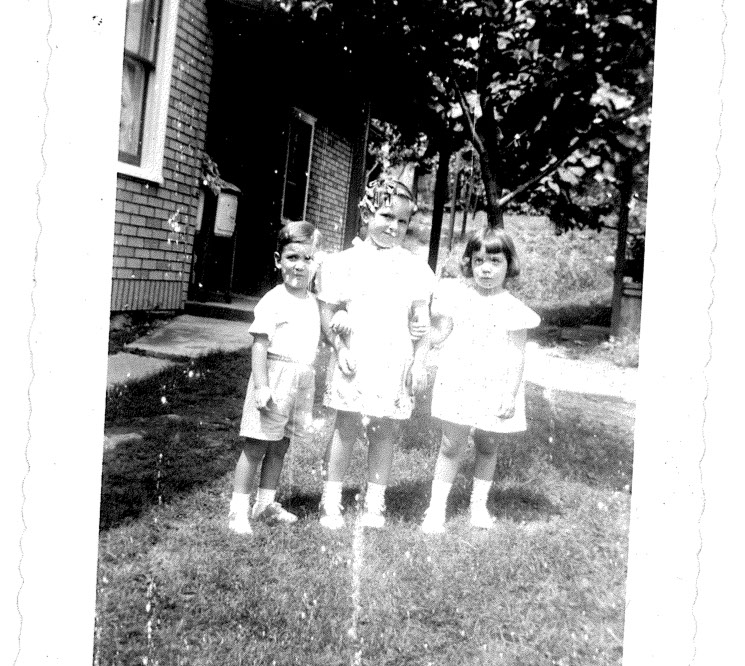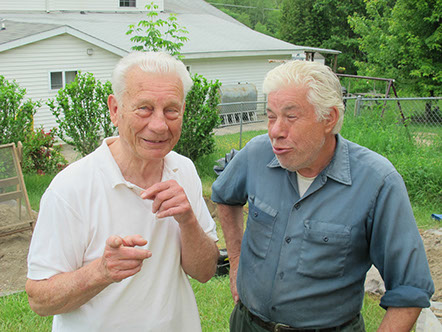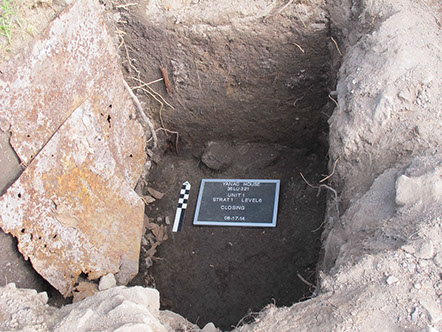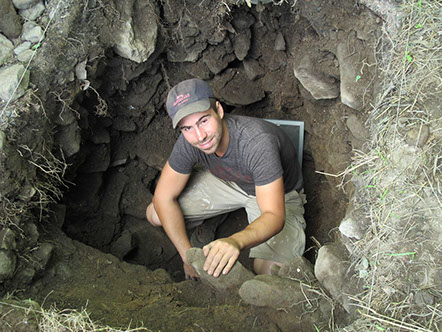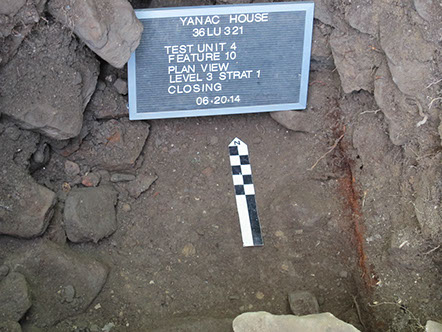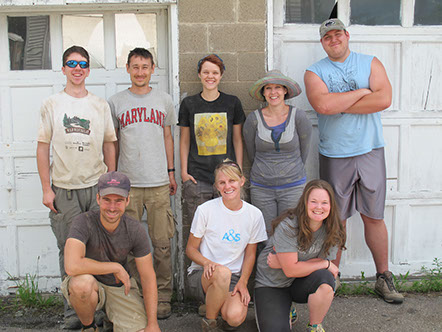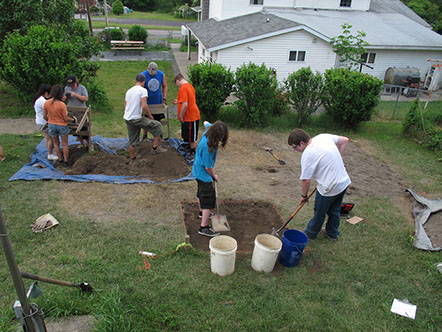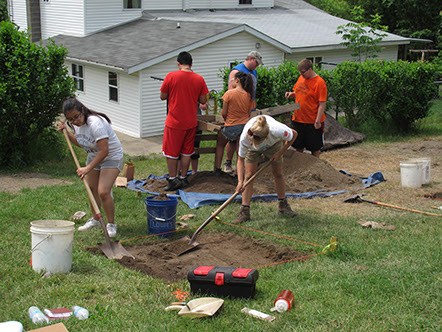Yanac House (36LU321)
During the summer of 2014, we excavated our first formerly company owned double house located in Pardeesville, PA. In previous years, our team focused on Italian enclaves, namely in Lattimer during the summer 2012 field season, and in Pardeesville in the summer of 2013. In contrast to the Italian settlements, the double houses situated within Pardeesville town proper were constructed by the Lattimer Coal Company, specifically for the purposes of being rented out to its mineworkers and their families. Characteristically, Pardeesville’s double homes (historically Lattimer No. 2) were architecturally identical to one another and spatially organized along two historically tiered streets (Upper and Lower) in rows on either side of each street. In the 1940s, however, the Pardee Bros. & Company Inc. disinvested in the settlement as it moved into bankruptcy. This transition into private home ownership can be seen in the partitioning of lot sizes and remodeling of double homes.
Research at the Yanac House site (36LU0321) is aimed at understanding the domestic and social lives of coal and textile mill workers and their families in these company homes. Historic ethnic divisions which likewise manifested in distinct class delineations made this field season’s work on a specifically identified Slovak homestead ripe for comparison with our previous research conducted on nearby Italian enclaves. The Yanac House site is located on what was previously known as Lower Street, now Yanac Street, and is known to have housed both coal miners and textile mill workers throughout its tenure as a company double house. Notably, this house is still occupied today, though the vocations of its modern-day occupants and those of the town’s inhabitants overall are no longer associated with coal mines or textile mills.
Broadly, our research questions focus on labor, ethnicity and immigration as social processes in the 19th and early 20th centuries. As a part of that theme, understanding the foodways of working class families in company-owned homes in order to ascertain their role during periods of strikes and economic unrest became a major line of inquiry this season. Pragmatically, this agenda will provide us with insights into the domestic experience and the ways in which household labor manifested itself through the preparing of meals, raising of livestock, and growing of subsistence gardens. Additionally, extensive ethnographic work focused specifically on textile mill laborers was also conducted this summer.
Report
Maps
Sponsored by the University of Maryland Department of Anthropology
1111 Woods Hall, College Park, MD 20742
(c) 2015 V.C. Westmont
Contact us with feedback, questions, or concerns

